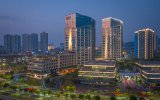Hello one and all,
I am new here, so first, a bit of an intro... My name is Mark Lent and I have worked as a photojournalist for 40 years now, shooting images for several large media organizations and was a writer and moderator on the old Popular Photography & Imaging Magazine forums as well as the Adorama Learning Center. Now, I live and work in a university teaching photography in southern China in a city called "Zhuhai" (Juu-Hi), which is located between Hong Kong and Macau. A beautiful area and reminds me a lot of Hawaii.
So, this is me. I have been working on my drone for a few months now and have decided to write a book about drone photography specifically, This book will be about the drone technicals, and how to incorporate good photographic techniques within the working abilities of the drone itself to get the most from your images. This will include ND filters, perspective, angles and a few other things.
I would like to know, if you are willing to give NEW drone users some tips regarding your experiences with shooting images (again, not video) with your drone? I intend to give credit to the sight and individual who gives the tip, so you may be able to have your comment in this book. Sorry, I make no money from this project and it is strictly to foster a better understanding of the topics within drone photography, so no money in this, but will send you an e-copy when published so you can have some bragging rights. Best I can promise.
Very interested in reading your experiences, expertise and suggestions and thanks in advance for the interest.
Cordially,
Mark Lent
Assistant Professor
Beijing Normal University-
Hong Kong Baptist University
United International College
I am new here, so first, a bit of an intro... My name is Mark Lent and I have worked as a photojournalist for 40 years now, shooting images for several large media organizations and was a writer and moderator on the old Popular Photography & Imaging Magazine forums as well as the Adorama Learning Center. Now, I live and work in a university teaching photography in southern China in a city called "Zhuhai" (Juu-Hi), which is located between Hong Kong and Macau. A beautiful area and reminds me a lot of Hawaii.
So, this is me. I have been working on my drone for a few months now and have decided to write a book about drone photography specifically, This book will be about the drone technicals, and how to incorporate good photographic techniques within the working abilities of the drone itself to get the most from your images. This will include ND filters, perspective, angles and a few other things.
I would like to know, if you are willing to give NEW drone users some tips regarding your experiences with shooting images (again, not video) with your drone? I intend to give credit to the sight and individual who gives the tip, so you may be able to have your comment in this book. Sorry, I make no money from this project and it is strictly to foster a better understanding of the topics within drone photography, so no money in this, but will send you an e-copy when published so you can have some bragging rights. Best I can promise.
Very interested in reading your experiences, expertise and suggestions and thanks in advance for the interest.
Cordially,
Mark Lent
Assistant Professor
Beijing Normal University-
Hong Kong Baptist University
United International College











